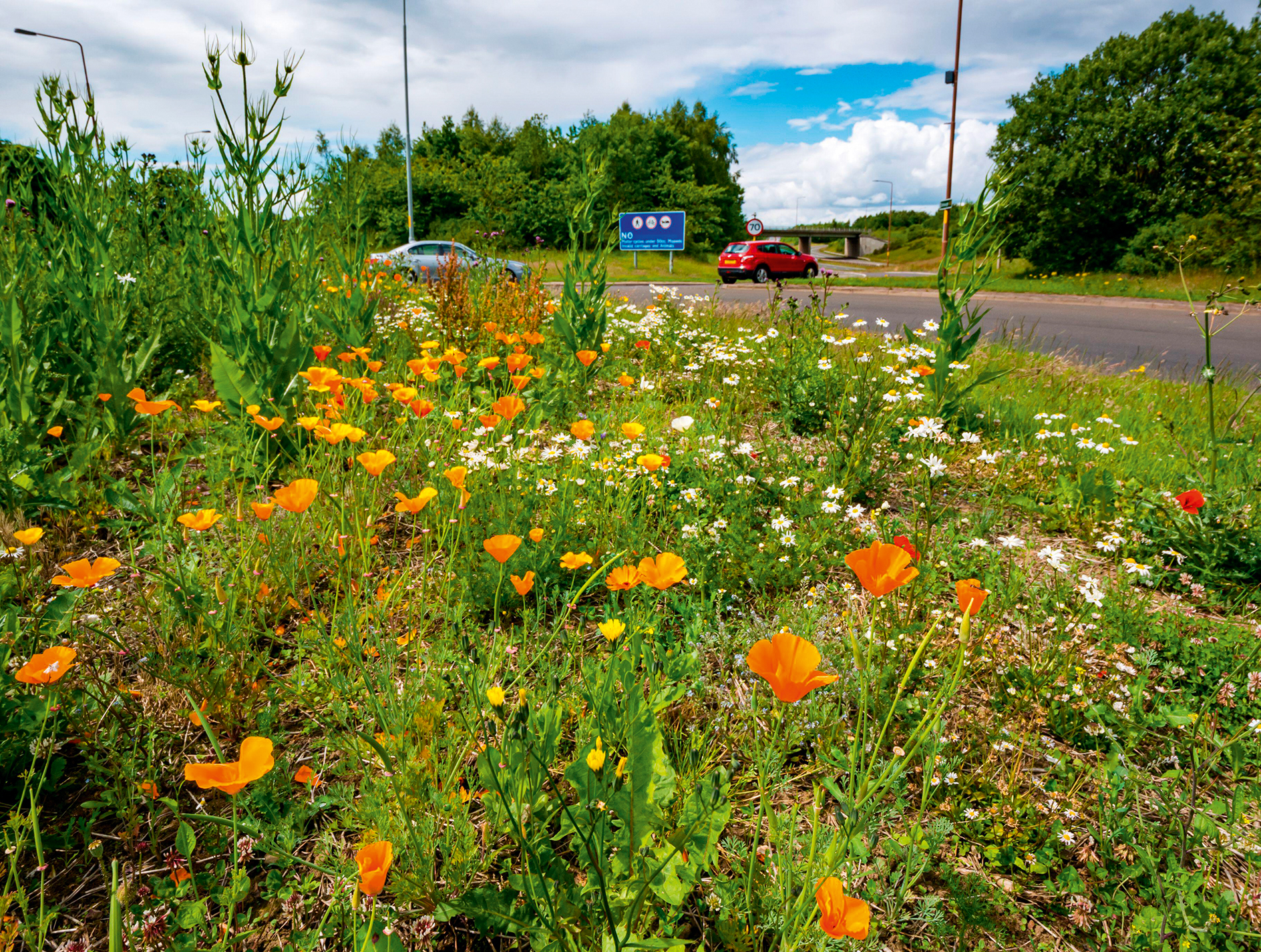Battle over the green verges of Britain as many 'slashed while in full bloom'
When should a grass verge be cut? It might seem an innocuous question, but it's something of a battleground between residents and local councils, as Carla Passino reports.


Controversy has erupted over verge management, after eco-conscious residents across the country reported that some verges are being cut well ahead of the late-summer window recommended by conservation charities, such as Plantlife and The Wildlife Trusts.
Many of these cuts look unavoidable. When Wildlife Trusts communication officer Emma Robertshaw discovered that Powys County Council had trimmed the verges of a local lane during bird-nesting season, the council told Country Life that, although its scheduled cuts are timed to support biodiversity, it is carrying out cuts on some roads now for safety reasons.
The same is true in Kent, where, says Bethany Pateman of Kent Wildlife Trust, ‘there are certain cuts, such as the visibility cuts and the one-metre rural-swathe cut, which cannot be left until August, as this could prove hazardous if the long grass starts falling over into the road. An answer could be to have an early cut and a late one, instead of one cut in the middle of summer — this, of course, would double the cost’.
Some people remain concerned that verge cutting is going ahead even when there are no obvious safety issues. ‘Highways cut the central reservation of the A3 around the Thursley to Hindhead Tunnel area in Surrey when it was in full bloom at least a month ago; I could see no need, as there was no clear visibility issue or reason you’d need to see the other carriageway,’ says Surrey resident Marcus Wehrle.
‘Plenty of cutting around Guildford as well, such as the verge near Broadstreet Common, which again did not appear to present a danger.’
However, replies James Steel, lead councillor for environment at Guildford Borough, the council, although committed to supporting wildlife, must make sure drivers can see clearly at junctions. ‘We receive a significant number of complaints if grass is not cut, especially in urban areas. We are currently only cutting around junctions, road signs, cycle paths and areas where there are footpaths.’
In counties such as Kent or Surrey, the problem can sometimes be compounded by the fact that some verge management is outsourced to contractors. This, explains Zoe Channon of the Surrey Wildlife Trust, ‘requires contracts to be looked at and changed, in order to change cutting practices. I’d say most councils want to make changes and many in Surrey already have; however, it does take time to change operations, especially if they cover a large area and have a large team undertaking the work’.
Exquisite houses, the beauty of Nature, and how to get the most from your life, straight to your inbox.
She suggests the public has a role to play in helping keep verges as uncut as possible: ‘Local residents will notice if a patch of pyramidal orchids and other wildflowers come up in an area and could put forward proposals to the councils that these areas are left uncut.’
There is also a need to educate a small, but vocal segment of the population that decries ‘overgrown’ verges as eyesores and demands action from councils and highway authorities, putting the greatest pressure on those that most adhere to best environmental practice.
‘This is very much the case and can be very off-putting and demoralising for councils,’ says Miss Channon. ‘A particularly effective method is putting up signs that indicate verges are being managed for wildlife and pollinators. For most members of the public, this would be a difficult message to ignore or disagree with.’
Carla must be the only Italian that finds the English weather more congenial than her native country’s sunshine. An antique herself, she became Country Life’s Arts & Antiques editor in 2023 having previously covered, as a freelance journalist, heritage, conservation, history and property stories, for which she won a couple of awards. Her musical taste has never evolved past Puccini and she spends most of her time immersed in any century before the 20th.
